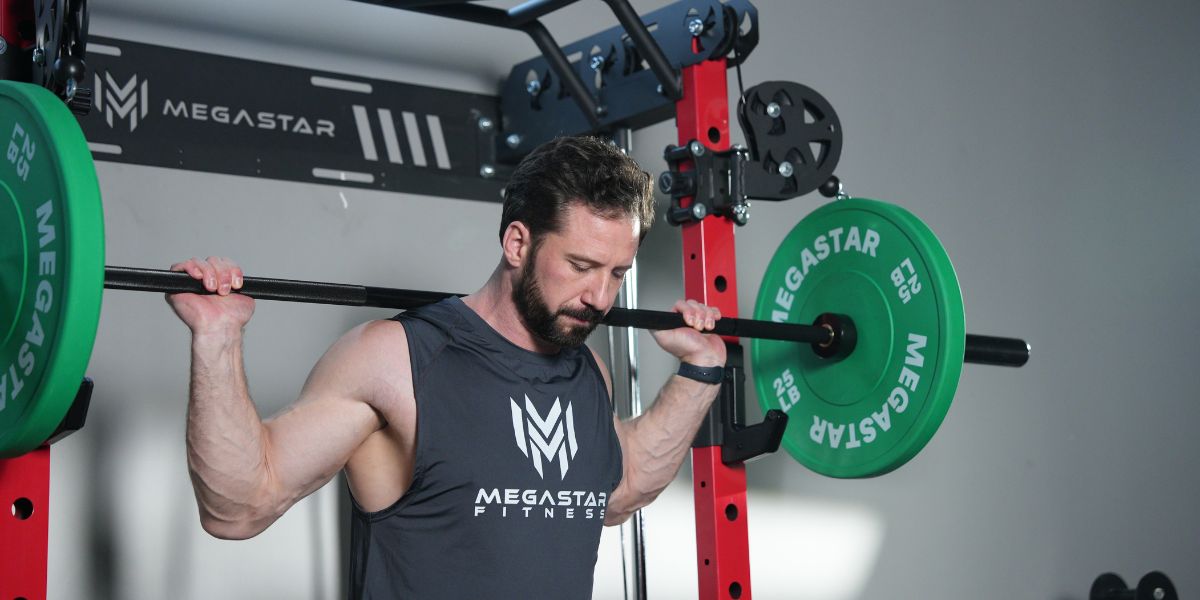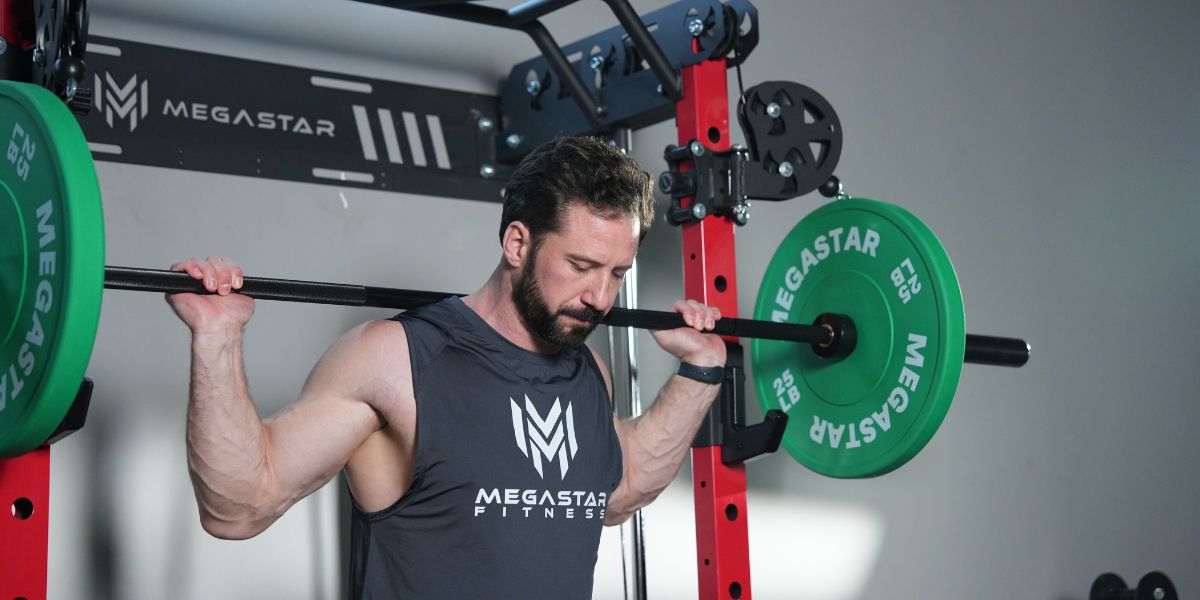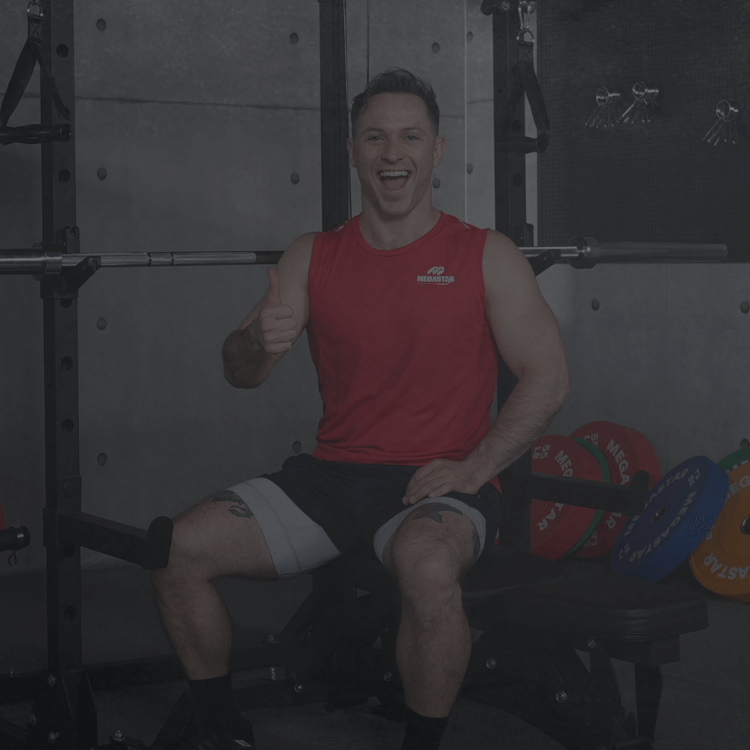The squat is a cornerstone of almost any effective strength training program, but the debate over the "best" way to do it is a classic one. In one corner, you have the barbell back squat, hailed by many as the undisputed king of lower body exercises. In the other, you have the Smith machine squat, a popular and often-debated alternative. While purists might dismiss the machine, the truth is that both movements are valuable tools. The key is knowing which tool to use for which job.
This guide will break down the key benefits of Smith machine and barbell squats, helping you decide which one, or which combination,
Who Each Style Fits Best
- Smith Machine Squat: Ideal for those with a primary goal of hypertrophy (muscle growth). The fixed path removes the need to balance, allowing you to focus purely on blasting your quads and glutes. It's also a great option if you train alone and want an extra layer of safety or if you're a beginner building confidence under a load.
- Barbell Squat: The king for building maximum strength and athletic power. Because you have to control the bar in three-dimensional space, it recruits more stabilizer muscles throughout your entire body. It's best for lifters who have mastered core bracing and want the highest carryover to other athletic movements.
Quick Pros & Cons
|
Smith Machine Squat |
Barbell Squat |
|
Pro: Stable, fixed path for easier focus |
Pro: Builds full-body stability and coordination |
|
Pro: Safer to push to near-failure alone |
Pro: Higher ceiling for maximal strength |
|
Pro: Less demand on balance and stabilizers |
Pro: Better carryover to sports and daily life |
|
Con: Less natural movement path for some |
Con: Requires more technical skill and balance |
|
Con: Doesn't build stabilizer muscles as effectively |
Con: Higher risk without proper form or safety racks |
Key Benefits Explained
Let's dig into the specific advantages of each lift and how they apply to your training.
Strength & Athletic Carryover

When it comes to building raw, functional strength, the barbell squat wins. The instability of a free-weight bar forces your core, hips, and back to work overtime to stay tight and control the weight.
This total-body tension and coordination directly translate to other heavy lifts and athletic activities like jumping, sprinting, and tackling.
For most strength-focused athletes, the barbell squat should be the primary lift. You can then use the Smith machine as an assistance exercise to add more muscle-building volume to your legs without the systemic fatigue of another heavy barbell session.
Hypertrophy & Mind-Muscle Connection
If your goal is pure muscle size, the Smith machine can have a distinct edge. By taking balance and stabilization out of the equation, you can direct all your mental and physical energy into the target muscles—namely, your quads and glutes.
This stability makes it easier to achieve a strong mind-muscle connection and push your muscles closer to true failure.
You can easily tweak your stance on the Smith machine to target different muscles:
- Quad Focus: Place your feet directly under your hips. This encourages more forward knee travel, just like a hack squat, which hammers the quadriceps.
- Glute Focus: Place your feet slightly forward. This allows you to sit back more, creating more hip flexion and putting greater tension on the glutes and hamstrings.
Stability & Training Alone
Safety is paramount, especially when you're pushing your limits without a spotter. The Smith machine's hooks allow you to rack the bar with a simple twist of the wrist at any point during the rep. The fixed path also prevents you from falling forward or backward, providing a high degree of perceived safety.
However, a barbell squat can also be performed safely when alone. The key is to set up in a power rack with safety pins. Adjust the pins to a height just below the bar's position at the bottom of your squat.
If you fail a rep, you can simply set the bar down on the pins and exit from underneath.

Form & Setup Essentials
Proper execution is everything. Here’s how to set up for both movements correctly.
Smith Machine Squat Steps
- Set Your Stance: Position the bar on your upper back and stand with your mid-foot slightly in front of the bar's path. This prevents your heels from lifting.
- Angle Your Feet: Turn your toes out slightly (around 15-30 degrees) to create space for your hips.
- Brace Your Core: Before each rep, take a deep breath and brace your core as if you're about to be punched. Keep your ribs stacked over your pelvis.
- Descend with Control: Lower yourself by bending at the knees and hips, allowing the bar to glide down the rails. Keep your knees tracking in line with your toes.
- Drive Up: Drive through your mid-foot to stand back up, keeping tension on your quads and glutes.
Barbell Back Squat Steps
- Get a Grip: Grab the bar just outside your shoulders and dip under it, setting it firmly on your upper back muscles (traps), not your neck.
- Create Tension: Pull your elbows down and forward to engage your lats, creating a stable "shelf" for the bar. Take a big breath and brace your core 360 degrees.
- Initiate the Squat: Unrack the weight and take 2-3 steps back. Sit your hips down and slightly back while keeping your heels planted firmly on the floor.
- Hit Your Depth: Descend to a depth where your hip crease is at or just below your knee, or as low as you can with good form.
- Stand with Power: Drive your chest and back up, returning to a tall standing position along the same path you took down.
How To Choose For Your Situation
Let's make this simple.
- If your primary goal is maximum strength or athletic performance, make the barbell squat your main lower body lift. Use the Smith machine for accessory work like high-rep squats or lunges to build muscle without the heavy systemic fatigue.
- If your primary goal is muscle size (hypertrophy) with less focus on balance and coordination, make the Smith machine squat your primary lift. You can still include a few sets of light barbell squats to maintain the motor pattern and skill.
- If one of the squat patterns causes you pain, don't force it. First, try adjusting your stance, foot position, and depth. If discomfort persists, switch to the other tool for a few weeks and see how your body responds.
Tracking That Actually Works
To make sure you're progressing, you need to track your workouts effectively.
- Log More Than Just Weight: Write down the load, reps completed, and your RIR (Reps in Reserve, or how many more reps you could have done).
- Be Consistent: Keep your range of motion and tempo (the speed of your reps) the same from week to week. A half-squat with 315 lbs isn't better than a full-depth squat with 225 lbs.
- Use Double Progression: This is a simple and powerful method. First, aim to add reps to your sets each week with the same weight. Once you hit the top of your target rep range (e.g., 12 reps), then you add a small amount of weight the next week and start back at the bottom of the rep range (e.g., 8 reps).
Your All-in-One Squat Solution

If your takeaway from this guide is that a Smith machine lets you train hard, safely, and on your own, the MegaStar P107 is a smart pick. It pairs a power rack with a guided Smith bar, plus a dual cable crossover, multi-grip pull-up bar, and a landmine attachment, so one station covers heavy squats, accessories, and full-body days. Built-in safety stops and quick height adjustments make solo sessions feel secure, while the compact footprint keeps your home gym tidy and ready for the next workout.
Wrap Up & Next Steps
Both the Smith machine and the barbell squat are fantastic tools for building a strong, muscular lower body. Instead of viewing it as an either/or debate, think of them as two different weapons in your training arsenal. Based on your goals, pick one to be your primary squat pattern for the next training block and use the other as an accessory. Start with a two-week test block where you get comfortable with the lifts and your setup. Track your load, reps, and RIR. After two weeks, review how your joints feel and how your performance is trending, then commit to a focused four-to-six-week cycle to drive real progress.
Frequently Asked Questions
Which builds more muscle?
Both are fantastic muscle builders. The "best" one is the one that allows you to apply progressive overload safely and consistently. If the stability of the Smith machine helps you push your sets harder and with better technique, it can absolutely shine for hypertrophy.
Is the Smith machine bad for my knees?
No, the Smith machine itself isn't bad for your knees. However, poor foot placement can be. The most common error is placing your feet too far back, directly under the bar.
This forces an unnatural, vertical shin angle that can stress the knee joint. Simply move your feet a few inches forward to allow for a more natural movement path.
Which way should I face on an angled Smith machine?
Most modern Smith machines are angled slightly. There isn't one "correct" way to face. Try both directions. You'll likely find that one path feels more natural for your body's mechanics, allowing your hips to descend comfortably. Go with the one that feels best.







